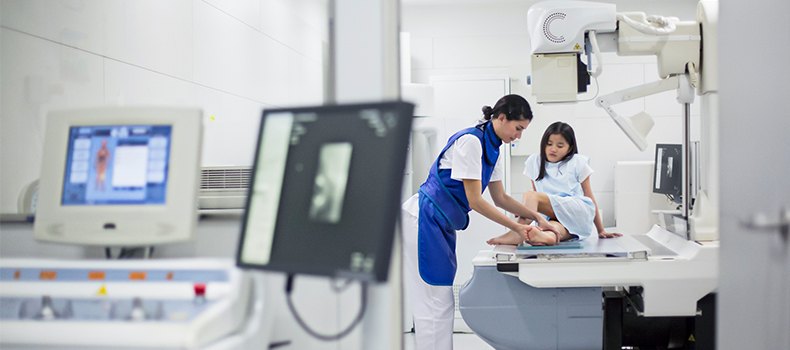X-RAY RADIATION, IS IT DANGEROUS?
10/11/2020 Views : 363
Faradilla Novita Anggreini

I was advised to undergo X-rays, is it safe?
Questions related to X-rays above are often asked by public. Basic knowledge about radiological examinations for public is very important to convey. This aims to provide understanding to the public regarding the positive and negative impacts of a radiological examination. Radiological examination is not just an X-ray examination. Radiology imaging is now increasingly advanced, some examinations are even very safe to perform because they do not cause radiation such as ultrasound and magnetic resonance imaging (MRI). Both of these tests are very safe because they do not use X-rays as an energy source to provide an overview of important body parts. What will be discussed at this time is the basic knowledge of X-rays that are often used in conventional radiological examinations.
X-rays are electromagnetic waves with short wavelengths. X-rays were discovered by Wilhem Conrad Rontgen in 1893 so that the examination was called an Rontgen examination. The discovery of X-rays with physical properties that run in a straight line, their penetrating power is stronger if the higher the voltage used and can blacken portrait paper is very helpful in the field of medicine, where X-rays are able to reflect the organs and through the principles Radiological imaging can help clinicians to identify invisible pathological conditions as the most likely cause of a patient's illness. X-rays, apart from being used in radiological imaging are also useful as radiotherapy. Radiotherapy is often used in the treatment of tumors or cancer, as a primary or additional treatment option.
The negative impact of X-ray radiation is its ability to change biological / molecular properties. Since the beginning of its discovery, several scientists who experimented with X-rays have experienced biological side effects such as tissue death (necrosis) in radiation-exposed areas, leukemia, and tumors / cancers where at that time there was no appeal to use radiation protection devices during the examination. Today, with science and technology developing rapidly, these negative impacts can be prevented / avoided / reduced by proper radiation safety management using adequate radiation protection and carrying out standard inspection practices. Where in practice, the safety of radiological examinations holds 3 principles: time, distance and shielding. Short time management is applied to reduce radiation duration to the level needed to achieve a good examination. Keep a distance from radiation source can reduce 25% of radiation exposure if standing as far as 2 times from the radiation source. The use of radiation protection equipment is also very important to reduce radiation. What are the types of radiation protection devices? Among others, in the form of a special body protection apron made of lead element (Pb), gonad radiation barriers, radiation protection gloves, radiation barriers to protect operators, and others. In addition, the choice of radiological examination in children and pregnant women should consider the disadvantages of what is expected to be obtained on the examination. No need to worry if you have to undergo a radiological examination, with the safety of a proper and careful radiation protection system, radiation exposure that causes negative effects can be prevented.
